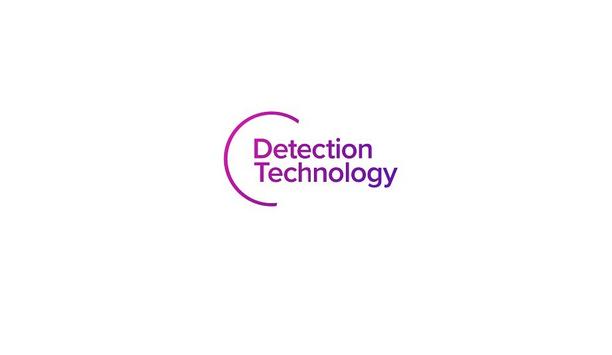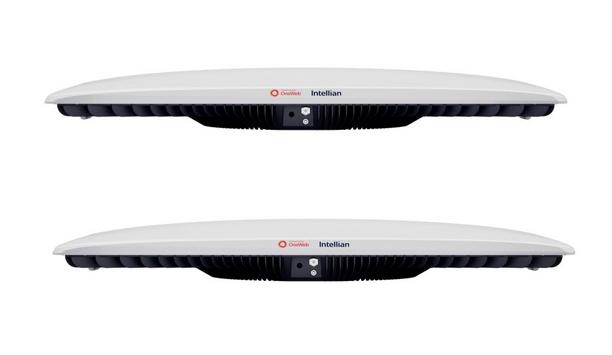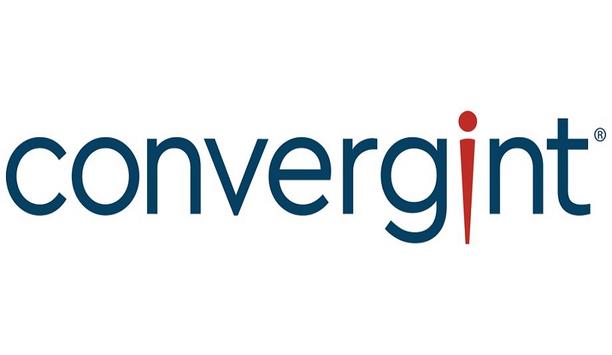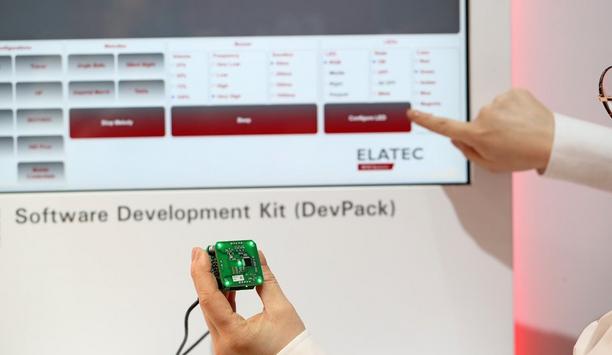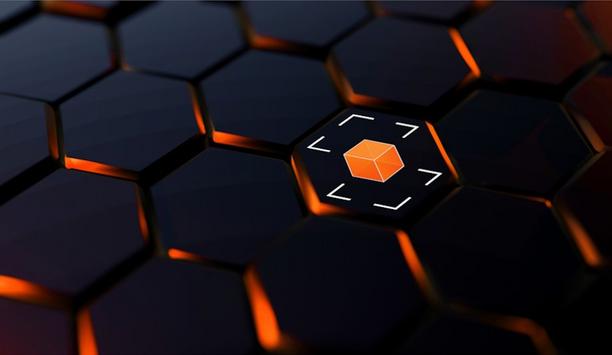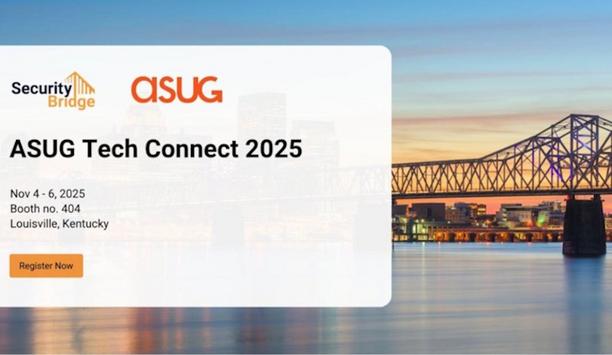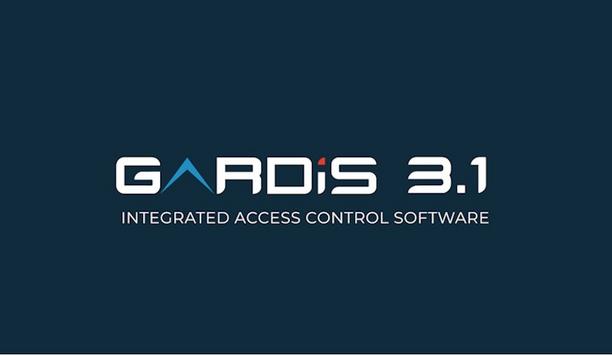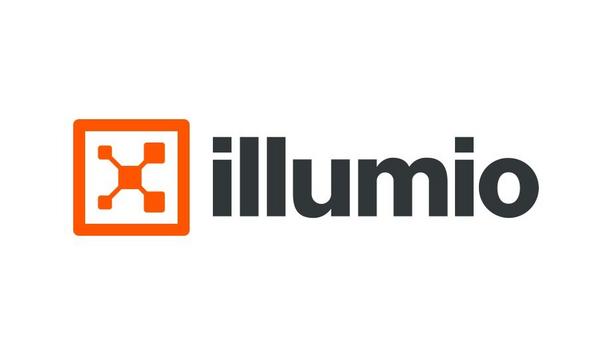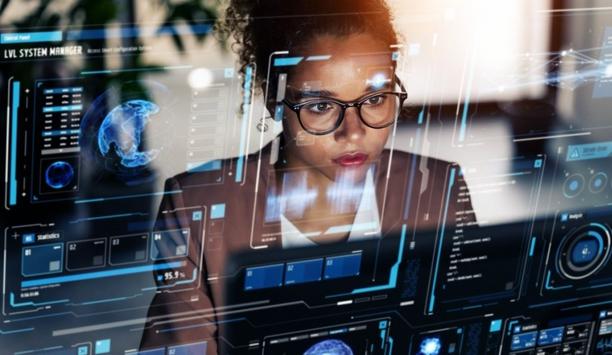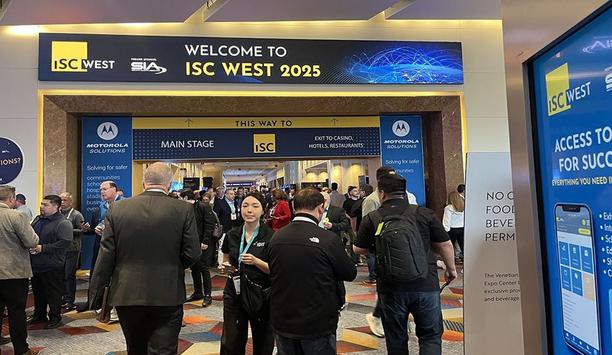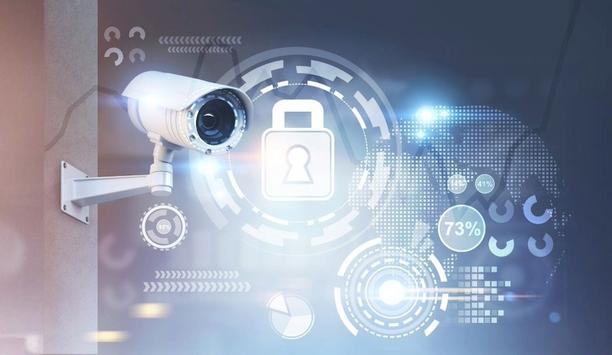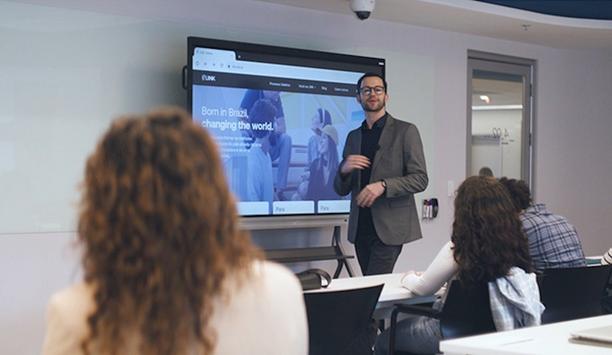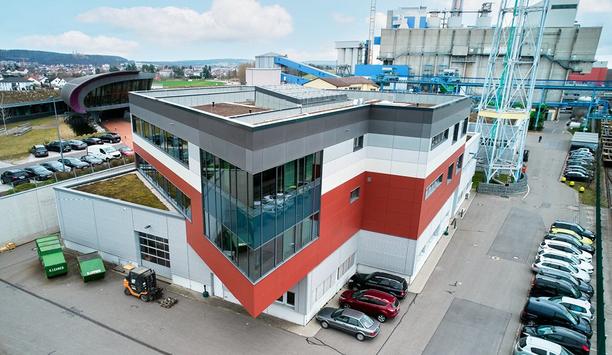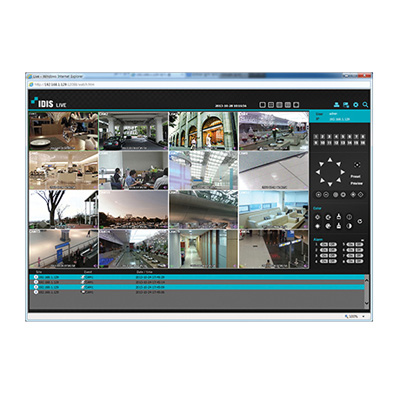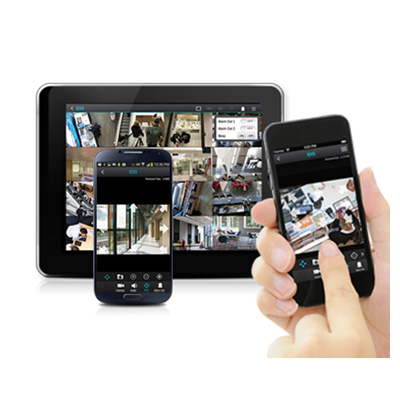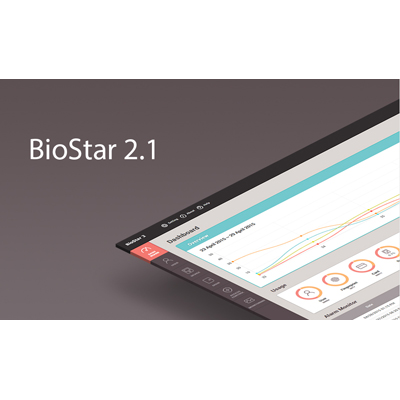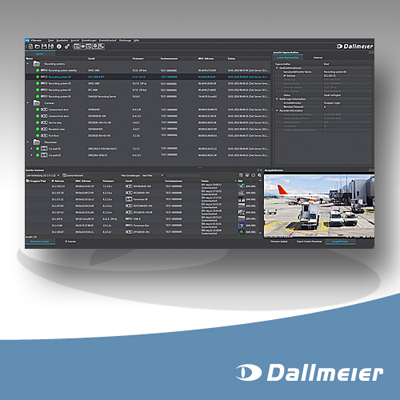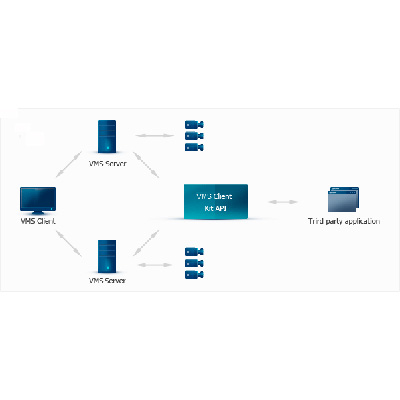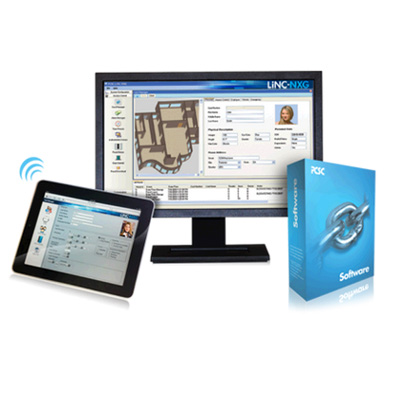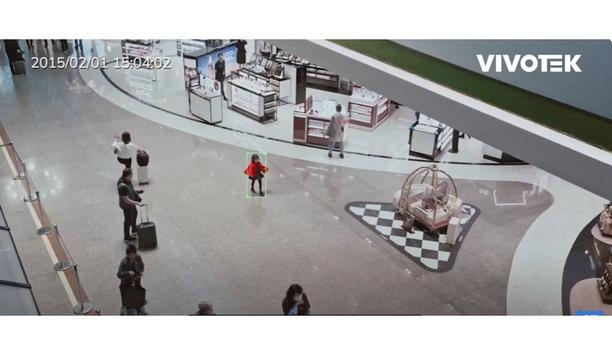Integration software
Detection Technology, a pioneer in X-ray detector solutions, announces that its pioneering all-in-one CT detector system, AIDA, has advanced into customer evaluation — a major step toward its commercial rollout in early 2026. The move into evaluations also highlights AIDA’s mission to solve one of photon-counting CT’s (PCCT) biggest challenges: managing and transmitting massive data flows. Strong customer interest confirms the hardware-software platform’s suitability for...
Intellian Technologies Inc., a global provider of resilient multi-constellation, feature-rich satellite user terminals and communications solutions, and OneWeb, the low Earth orbit (LEO) satellite communications company, have announced a new product portfolio of Intellian Flat Panel user terminals for use on OneWeb’s network. Flat Panel Series Intellian’s Flat Panel Series is a suite of both Pro and Compact user terminals that deliver exceptional performance in sle...
Convergint, a global pioneer in service-based systems integration, is acquiring Nusource Financial LLC, a pioneering provider of branch transformation, ATM services, and security solutions for financial institutions across the United States. It is anticipated that this acquisition strengthens Convergint’s capabilities in financial services, ATMs, ITMs, Teller Cash Recyclers (TCRs), core integrated ATMs and remote managed services and reinforces an area of strategic growth. Convergint&rsq...
Sielox, the established industry pioneer in intelligent layered access control and crisis event management solutions, is showcasing its latest innovations with Real Intelligence at ISC East 2025 in booth 426. Their flagship access control platform, Pinnacle, offers security teams unprecedented insights and visibility through access and event data. Featuring hundreds of user-selectable filters, Pinnacle gives operators the tools they need to not only collect valuable data, but draw operational i...
ELATEC, a pioneering manufacturer of access technologies, specializing in RFID readers and credentials, has released its latest software development toolkit, TWN4 DevPack 5.07. The new version delivers faster performance, stronger security and greater flexibility for configuring and managing RFID readers, enabling flexible and future-proof access solutions. Future-ready authentication solutions “With every DevPack release, our goal is to make life easier for developers,&...
Alfred International, a pioneer in smart lock solutions, announced that its ML2 Smart Mortise Locks and DB2S Smart Locks with Zigbee have achieved INTEREL certification, enabling seamless integration with the EOS 2 all-in-one thermostat hub for smart building deployments. This certification positions Alfred as a key partner for property management companies seeking cost-effective, scalable access control solutions across multi-family properties. Alfred's commercial-grade Zigbee smart locks Th...
News
Gallagher Security continues to deliver on its promise of future-ready innovation with the release of Command Center v9.40, introducing powerful new capabilities for the Controller 7000 product range. This release marks a significant leap forward for Gallagher’s award-winning site management platform, with enhanced scalability, performance, and proactive system management, reinforcing Gallagher’s commitment to supporting complex, high-density access control environments. Gallagher’s Controller 7000 product range Mark Junge, Gallagher Security Chief Executive, says with Command Center v9.40, Gallagher’s Controller 7000 product range, including the Standard, Enhanced, and High Security variants, now supports the optional licensing expansion of up to 24 doors per controller, more than doubling the previous limit of 10. “This enhancement means larger installations can be managed with significant reductions in infrastructure costs and simplified system architecture,” says Mark. Channel Partner and End User’s Mark Junge added: “Importantly, even at full 24-door capacity, the Controller 7000 range maintains high performance and access responsiveness, even in the most demanding environments." He continues, “When we launched the C7000, we said it was the platform for the future. With v9.40, we’re delivering on that promise. This release is a direct response to our Channel Partner and End User’s need for greater flexibility and scalability – and it’s just the beginning." “As part of Command Center v9.40, we have boosted the number of HBUS readers supported, from 20 to 40, and increased OSDP readers from 16 to 32. V9.40 also increases the number of supported inter-controller communications from 60 to 100, allowing for larger and more complex controller networks without compromising performance or manageability,” says Mark Junge. Proactive maintenance strategies Command Center v9.40 also introduces Lock Cycle Counting, a new feature designed to support proactive maintenance strategies. Gallagher Security Senior Product Manager, Jim Rayner, says, “We know that when locks fail, they do it at the most inconvenient time - at the end of the day or after hours. This results in costly callouts and expensive repairs. Proactively managing the life of a lock prevents these occurrences from happening, and ensures upgrades are proactive.” Cloud-first identity strategy Also available with v9.40 is Entra ID single sign-on. The Command Center integration with Microsoft Entra ID for single sign-on, enables secure and seamless authentication using OpenID Connect. Mark Junge says, “This integration allows customers to align with their organization’s cloud-first identity strategy, reduce reliance on legacy AD infrastructure, and benefit from centralized access control, multi-factor authentication, and conditional access policies - all managed through Microsoft Entra. It simplifies user management, enhances security, and supports smoother migration to modern identity platforms.” Command Center v9.40 is available from 18 November 2025.
SecurityBridge, creator of the Cybersecurity Command Center for SAP, announced that Bill Oliver, Managing Director for the Americas, and Tim Alsop, Product Architect and Managing Director for the U.K., will present at ASUG Tech Connect 2025 on strategies for securing SAP environments. Their session, “Securing the Digital Core: SAP Cybersecurity Strategies,” will highlight the SecurityBridge Platform and the newly integrated TrustBroker technology, demonstrating how these solutions work together to protect SAP environments against emerging cyber threats. The session will take place on Nov. 6 from 3:15 to 4:05 p.m. ET in room L014. integrating cybersecurity into SAP governance ASUG Tech Connect, held Nov. 4–6 in Louisville, brings together developers, architects, administrators, and engineers across the SAP ecosystem for technical education focused on cybersecurity, cloud adoption, automation, and artificial intelligence. The SecurityBridge presentation aligns with the technical education focus by detailing the use of context- and risk-based multi-factor authentication (MFA) and step-up authentication via TrustBroker, along with security monitoring, vulnerability management, and incident response practices. In addition, the speakers will also discuss integrating cybersecurity into SAP governance frameworks to help ensure organizations can safeguard their digital core while advancing modernization initiatives. Digital backbone for critical business operations "Organizations depend on SAP as the digital backbone for critical business operations, so protecting that core is essential," said Bill Oliver, adding "With the move to S/4HANA and hybrid cloud, companies need unified visibility and intelligent authentication that strengthens security without slowing business." He continues, "By combining the SecurityBridge platform with TrustBroker, we enable customers to detect threats earlier, validate access based on context and risk, and secure their SAP environments end-to-end. Our mission is to help SAP users stay resilient and compliant as their threat landscape continues to expand." ASUG has more than 130,000 members representing thousands of organizations. Attendees can visit SecurityBridge at booth No. 404 for private consultations and technical discussions.
An Open Integration Platform is a software that integrates several unconnected security systems, controlling them via a unified user adapter. This enables the user to detect occuring situations and to resolve them in an optimal way. Such a solution is often also called a PSIM or security and building management system. WinGuard is an Open Integration Platform reaching far beyond the common scope, offering the possibility for cross-domain integration of the complete security, building and communication technology. In addition, the connection to further systems such as e.g. incident management or ticketing systems can be realized seamlessly. WinGuard collects all incidents from different security and information systems. The intelligent event visualization enables the user to easily identify situations. Dynamic workflows and SOPs as well as automatic actions support the user in the control center. Organize Security with WinGuard Currently, more than 550 adapter drivers are available to a wide variety of security, building and communication technology systems. Furthermore, the development of new adapters is also possible. Thus, WinGuard is the ideal solution for most diverse project requirements. Open Platform With more than 2,700 realized installations in different application areas, WinGuard is one of the internationally market-pioneering Physical Security Information Management (PSIM) systems. Due to the vendor-neutral and open architecture of the software platform, the entire technical infrastructure of a building can be visualized and controlled. This considerably simplifies the complex workflows in a control center. Guided Operation The user works with an intuitive and customizable user adapter providing him with content such as maps and camera images depending on the situation. Guided process instructions support the user in event processing and lead him through the necessary actions to resolve the situation in a quick and secure way. Reports & Evaluation All events like messages and user entries are logged in WinGuard. Based on this data, reports and evaluations can be created which provide a quick overview of relevant key figures of the connected systems and the control center. For external use, the information can be exported to common formats or provided in real-time. Free Scalability The platform is scalable from a single workstation system to internationally networked control centers and can be extended anytime with additional servers and workstations, function modules and adapters. Security & Stability The WinGuard location and redundancy concept allows the realization of complex system architectures and fallback scenarios. The system availability is constantly ensured via hot standby. The distributed data storage enables fluent working even at locations which are connected via a low bandwidth. The network connections are always encrypted by WinGuard according to current standards (AES 256). Extensibility In addition to special solutions for different industries, open adapters and the close collaboration with other companies enable the system to be extended and additional use cases to be covered. Examples are ticketing systems, incident management systems and various evaluation tools (KPIs, health monitoring, etc.). Used everywhere Cross-site installations, e.g. the globally distributed stores of a retail chain, benefit from automatic actions executed via WinGuard at each connected site. The connection of further process supporting software, e.g. mission control, ticketing or further data analysis systems, can be easily realized. In addition, the Advancis Open Platform (AOP) enables the user to extend the software itself as desired with functionalities, adapters and individual UI components as a generic concept. There are virtually no limits to the use of custom components. In this way, even “applications within the application” can be implemented. All extensions integrate seamlessly into the existing application. Flexible and scalable WinGuard is scalable from a single workstation system to an internationally cross-linked control center and can be extended anytime by further servers and clients. Already WinGuard Express enables cost-efficient monitoring and control of a single site by e.g. linking the access control system with CCTV and/or connecting a fire alarm system with up to 3,000 detectors. In addition, the iOS or Android App can already be used with the Express solution, enabling mobile access to the platform and all connected systems. Distributed systems for installations with several or numerous workstations profit in particular from central documentation and comprehensive reporting possibilities. In addition, the multiple redundancy as well as the high availability of the system lead to a high level of reliability in larger installations. This is particularly important in critical environments, e.g. in finance, data centers, correctional facilities or other highly sensitive areas. Customizable System With individually adapted modules for specific functionalities, workflows or industries, WinGuard meets even very special requirements. Modular & Scalable With individual function modules as well as the possibility to freely extend the overall system, WinGuard always offers the perfect solution for different requirements. Open Architecture Subsystems are connected to WinGuard via adapters. Besides the support of open standards, WinGuard offers more than 550 manufacturer-specific adapter modules. Encryption In addition to network communication secured by TLS, the database can also be encrypted with AES according to the highest security standards. CAD Support The WinGuard CAD Support allows the import or linkage of CAD graphics, among others in DWG, DXF and DGN format. Using CAD Support plus, the automatic transfer of detector positions is also possible. Notifications WinGuard Event Routing offers a dynamic forwarding of event messages to workstations and mobile devices. Furthermore, it is also possible to send text messages and voice recordings. Mobile Devices Web access and apps (iOS and Android) provide clear access to all events and operations of the control center at any time. Video Manager Using the WinGuard Video Manager, analog and digital video systems can be controlled. Image displays, PTZ control and archive access are realized in a unified way, provided that the connected systems offer these functions. Video Archive The Video Archive offers the possibility to create bookmarks and store sequences in WinGuard, independent of the video system. The bookmarks or sequences can be linked to events and additional notes can be attached. Security efficient and effective Transform the process of individual enterprise security into an easy and secure process User Administration WinGuard offers a comprehensive user and rights management. As an option, an existing Active Directory (LDAP) can be applied for user administration. Redundancy Using several WinGuard Standby Servers, the complete database of the main system is continuously kept on one or more other computers. This ensures the system availability and stability at any time. Locations Distributed locations can be linked via location servers to ensure an independent operation of the locations in case of a possible breakdown of the central server or the network. Geo Information Integration of geographic information systems. The positions and states of datapoints can be dynamically visualized on maps and integrated in event processing. Segmentation Using segmentation, the database of network systems can be divided into segments in order to limit access to customer or location data. Configuration With the integrated Graphic and Text Editor, creation and editing of overview and event graphics as well as of workflows is possible. The user adapter can be individually adapted via user layouts and profiles. Facility Manager The WinGuard Facility Manager enables collection of maintenance dates and inspection intervals for unconnected systems such as e.g. fire extinguishers, sprinkler systems, air conditioning, etc. Scheduler The Scheduler module provides calendars, time schedules, a dead man’s handle function, automatic actions as well as control operations (scheduled and monitored system controls) in WinGuard. The WinGuard License Model The WinGuard license model includes four different basic systems which can be extended by optional modules (function or adapter modules), either directly at purchase or at a later point in time. All detector groups, cameras, intercom stations, etc. are uniformly managed as data points in WinGuard. Data points each require one (e.g. fire and intrusion detectors, lighting, monitors) or several data point unit licenses (e.g. doors, cameras, call stations). A function for the automatic projection of data points simplifies project planning. The more extensive an installation is, the more data point units are required for the connection to WinGuard.
Integrated access control and security manufacturer - TDSi has announced the release of GARDiS Pro Version 3.1, the latest enhanced iteration of its GARDiS Access Control Management Software. GARDiS 3.1 introduces expanded biometric support and intelligent credential management, delivering improved hardware reporting capabilities and new third-party integration options to further enhance system performance and flexibility. Latest update for GARDiS Pro Tina Baker, Software Development Manager at TDSi commented, "We are excited to announce this latest update for GARDiS Pro which delivers practical and meaningful upgrades that enhance both day-to-day operations and long-term scalability. Whether you're securing a single site or managing complex, multi-layered environments, GARDiS Pro v3.1 provides the tools to do it more efficiently and confidently than ever." Key enhancements in GARDiS Pro Version 3.1 The latest update to TDSi’s GARDiS Pro Software introduces a range of new features designed to enhance security, performance, and user experience. Version 3.1 adds support for the Digitouch Biometric Reader, enabling fast and cost-effective fingerprint authentication, and introduces automatic credential status updates to strengthen access control management. Administrators also benefit from customizable event log retention, improving compliance and system performance. Duress PIN alert function New third-party integration with Nettla allows facility bookings to automatically trigger secure, time-limited access permissions, while updates such as accented character support, enhanced expander and door status reporting, and lift button press logging further improve system flexibility and monitoring precision. Additional refinements include a new Duress PIN alert function for discreet security responses and multiple backend performance enhancements that deliver greater stability and responsiveness across the platform. Latest version of TDSi’s GARDiS Pro Software The latest version of TDSi’s GARDiS Pro Software builds upon the release of Version 3 earlier this year, which introduced a wide range of new features and enhancements including intuitive access control tools, advanced reporting, streamlined setup processes, a simplified licensing workflow, new multi-factor authentication options, and improved data import and user interface refinements. GARDiS Pro Version 3.1 is available now and can be downloaded from the TDSi Product Registration site. TDSi installers and customers are encouraged to upgrade to Version 3.1 to take full advantage of the latest features and performance improvements.
Illumio Inc., the breach containment company, announced Insights Agent, a new capability within Illumio Insights, the company’s AI-driven cloud detection and response (CDR) solution. Agent is an AI-powered, persona-driven guide designed to reduce alert fatigue, accelerate threat detection, and enable containment by delivering real-time, tailored alerts and instant one-click remediation recommendations. This powerful extension of Insights helps security teams stay focused and move quickly to contain threats before they escalate. Real-time discovery and containment “Security teams are overwhelmed by noise, and we don’t need more useless alerts; we need more actionable answers,” says Andrew Rubin, CEO and Founder of Illumio. “Illumio Insights was built to deliver clarity, not clutter. With Agent, we’re taking the next step: every user gets a personalized risk view tailored to their role, along with immediate, practical guidance on what to do next. This is real-time discovery and containment, designed for the people who defend our organizations every day.” Threat detection and actionable guidance Building on the foundation of Illumio Insights, Agent delivers role-aware threat detection and actionable guidance aligned to each user’s responsibilities, whether threat hunter, incident responder, or compliance analyst. It automatically prioritizes threats by severity and surfaces the most relevant ones for each user, enabling faster decision-making and more effective containment. With teams receiving an average of more than 2,000 alerts per day (roughly one every 42 seconds), according to the 2025 Global Cloud Detection and Response Report, reducing triage delays has never been more critical. Real-time visibility into traffic and risks The intelligent, targeted approach of Agent is made possible by the advanced capabilities of Insights. Powered by an AI security graph, Illumio Insights ingests and analyzes cloud-scale network data, delivering real-time visibility into traffic and risks. This purpose-built solution forms the foundation for Agent, enabling security teams to detect and contain threats with unprecedented speed and precision. Agent spotlight innovations Persona-Based AI Guidance: Users select from roles like threat hunter, incident responder, data security, or compliance monitor to receive insights tailored to their responsibilities. In-Depth Investigative Analysis: AI-powered analysis of workloads, policies, and flows with severity-ranked recommendations. Accelerated Threat Detection: Continuous background monitoring of flow and workload communication to spot anomalies. AI-Driven Response Plan: This plan guides users through prioritized, step-by-step remediation with automated handoffs across the security stack for fast, effective resolution. MITRE ATT&CK Mapping: Agent maps threats to the MITRE ATT&CK framework, helping users understand attacker techniques, prioritize responses, and reduce alert fatigue. One-Click Containment: Integrated with Illumio Segmentation, it enables instant isolation of compromised workloads; no host agents are required. Illumio Insights and Illumio Segmentation Agent is available in public preview as part of Insights and for Microsoft customers via the Microsoft Security Store, with general availability expected in December. Illumio Insights and Illumio Segmentation have been deployed across the entire corporate IT environment at Microsoft.
HID, a pioneer in trusted identity solutions, announces it has signed an agreement to acquire IDmelon, a Vancouver-based secure sign-in solution provider that streamlines the adoption of passwordless authentication through its proprietary software platform. IDmelon’s offering allows users to turn existing identifiers, such as a physical credential, smartphone, or biometric, into enterprise-grade FIDO security keys. In addition to its software solution, IDmelon offers hardware that supports the FIDO standard, providing a seamless and secure login experience for its users. Leverage existing identifiers “Users have become acutely aware of the problems with passwords,” said Björn Lidefelt, EVP and Head of HID. “By adding IDmelon to the HID family, we now provide an easier path to passwordless.” The FIDO standard, or passkey, has emerged as a secure and convenient approach to eliminating passwords and replacing them with phishing-resistant MFA. Today, enterprises primarily use hardware security keys, including USB or NFC, whereas IDmelon offers a smart solution to leverage existing identifiers as FIDO security keys. Smooth transition to passwordless access The IDmelon FIDO Management Platform makes it easier for organizations to move to passwordless authentication. It simplifies the user experience and connects physical and digital access into one seamless solution. By using existing cards or mobile devices, administrators can quickly register and manage users, while employees can log in securely with a PIN or biometric. This delivers strong security and a smooth transition to passwordless access—without major changes or disruptions, delivering real-time value. Passwordless authentication solutions The platform provides operational efficiency by centralizing passwordless authentication management. Admins can import users and groups, assign and manage access cards or security keys, enforce policies, and monitor activities—supporting a stronger identity-first security posture. Martin Ladstaetter, SVP and Head of Identity and Access Management Solutions, HID, said, “We are committed to providing seamless, best-in-class passwordless authentication solutions. Now, with IDmelon in our portfolio, we are better equipped to help customers maximize their existing hardware investments by converting existing access cards into converged credentials – secure, multi-use keys that unify physical and logical access across the enterprise.” Stronger identity-first security posture Founded in 2019 and a member of the FIDO Alliance, IDmelon is now part of HID’s Identity and Access Management Solutions (IAMS) Business Area. The IDmelon solution is managed within the IAMS Authentication Business Unit and will benefit from HID’s sales and other global functions. “At IDmelon, our vision is to empower people and organizations to stay focused on their businesses and thrive knowing that their identities are protected,” said Bahram Piri, CEO and Founder of IDmelon. “By joining forces with HID, we are in an even stronger position to help organizations overcome the growing problem of passwords to secure them against phishing and other credential-based attacks.” The acquisition is subject to customary closing conditions and is expected to close in the fourth quarter of 2025.


Expert commentary
In the ever-evolving struggle between cyber offense and defense, attackers have almost always moved first. In the emerging domain of artificial intelligence, this pattern appears to be repeating itself. Yet, global cybersecurity pioneers appear disconcertingly disengaged. Just over half even agree that AI-driven attacks are set to become dramatically more complex and widespread. Equally concerning is the widespread apathy regarding AI’s role in expanding an already sprawling corporate attack surface. This is no small oversight. A recent global Trend Micro study showed that 73 percent of organizations have already suffered cybersecurity incidents due to unknown or unmanaged assets. In an era where digital blind spots are both common and consequential, hesitation is a risk few can afford. Security has to shift from reactive protection to proactive risk exposure management. The opportunity and the risk of AI Threat actors are now using jailbroken versions of legitimate generative AI tools such as ChatGPT The potential for AI to transform enterprise operations is enormous, but so is the risk. The warnings have been loud and clear. As early as the first quarter of 2024, the UK’s National Cyber Security Center (NCSC) stated that AI would “almost certainly increase the volume and heighten the impact of cyber-attacks over the next two years.” Their prediction is proving accurate. Threat actors are now using jailbroken versions of legitimate generative AI tools such as ChatGPT, freely traded as services on the dark web, as well as malicious models like FraudGPT, built on open-source large language models (LLMs). These tools are no longer just about automating tasks; they are turbocharging the entire attack lifecycle. From more convincing phishing emails and precise target selection, to sophisticated malware creation and lateral movement within breached systems, AI is driving a step-change in threat actor capability. Integrating open-source models However, this is only one side of the coin. The other, often overlooked, is AI’s impact on the corporate attack surface. Even well-meaning employees can unintentionally expand organizational risk. The widespread use of AI-as-a-service tools like ChatGPT introduces significant shadow IT concerns, especially when sensitive business information is input without proper oversight. Data processing and storage practices for many of these services remain opaque, raising additional compliance concerns under regulations like the UK GDPR and the EU’s AI Act. For those organizations that choose to build or customize their own LLMs, the risks multiply. Integrating open-source models may expose businesses to vulnerabilities, misconfigurations and flawed dependencies. Each new tool and environment adds to the complexity of an attack surface already strained by remote work setups, sprawling cloud deployments, IoT ecosystems, and accelerating digital transformation programmes. Managing the expanding risk landscape Many have already shared security incidents where a lack of asset visibility was the root cause Many security pioneers do understand what is at stake. Nine in ten agree that effective attack surface management is tied directly to business risk. They cite a long list of potential consequences, disruptions to operations, reputational damage, declining competitiveness, strained supplier relationships, financial losses and reduced staff productivity. Many have already experienced security incidents where a lack of asset visibility was the root cause. Despite this recognition, however, the response remains largely inadequate. Fewer than half of global organizations use dedicated tools to monitor their attack surface proactively. On average, only a quarter of cybersecurity budgets are allocated to managing cyber risk exposure. Third-party risk management is similarly neglected: fewer than half of firms actively monitor their vendors for vulnerabilities. This inertia creates an obvious contradiction. Security pioneers understand the business implications of unmanaged risk, but they are not equipping themselves with the tools or processes to respond. That needs to change—and fast. How AI can help defenders take the lead There is good news: AI is not only a weapon for cybercriminals. It can also be a powerful ally for defenders, particularly in the field of Cyber Risk Exposure Management (CREM). The best tools in this category use AI to continuously scan an organization’s entire digital footprint. They can automatically detect vulnerabilities, spot misconfigurations, identify rogue or shadow assets, and provide prioritized remediation recommendations. CREM platforms apply contextual filtering to reduce false positives and elevate the most urgent threats Intelligent algorithms can also analyze network behavior to identify anomalies that could signal a breach in progress. Unlike traditional tools, which often drown analysts in noise, CREM platforms apply contextual filtering to reduce false positives and elevate the most urgent threats. For overburdened security teams, this enables a far more focused and effective response. However, the keyword here is “continuous.” The nature of today’s IT environments, especially in the cloud, is dynamic and fast-moving. Assets appear and disappear within minutes. Static, point-in-time assessments are no longer sufficient. Yet more than half of organizations still lack continuous scanning processes. This leaves them exposed to risks that might persist undetected for weeks or months. Overcoming barriers to adoption So what is holding organizations back? In many cases, it’s not the technology itself but the internal politics of investment. Security pioneers interested in CREM tools often prioritize real-time alerting, clear dashboards, and seamless integration with their existing environments. All of this is now achievable. The challenge lies in securing board-level support. Many security teams still work in silos, disconnected from the broader business Boards are often cautious when it comes to cybersecurity investment, particularly when immediate ROI is not clear. To gain their trust, security pioneers must learn to speak the language of business risk, not technical threat. They must frame cyber exposure in terms of reputational impact, regulatory liability, operational continuity, and investor confidence. There is also a cultural component. Many security teams still work in silos, disconnected from the broader business. This limits their influence and makes it harder to embed security as a strategic enabler. In the AI era, this divide must be bridged. Cybersecurity must become a board-level concern, and risk exposure must be treated as a fundamental operational issue. Time to act We are at a critical inflection point. The AI revolution is not on the horizon, it is already here. Threat actors are moving rapidly to exploit it, leveraging tools and techniques that were unthinkable just a few years ago. Meanwhile, organizations remain slow to respond. Too few are investing in the tools, processes, and people needed to manage their risk exposure effectively. AI can be used not only to attack but to defend. CREM tools powered by AI offer a powerful way to regain visibility, restore control, and build lasting resilience. They enable proactive rather than reactive security. And they help organizations align their cybersecurity strategy with their broader business objectives. Security teams have to elevate the conversation. They must advocate not just for new tools, but for a new mindset, one that treats cyber risk as an enterprise risk, and one that prioritizes continuous visibility as a prerequisite for resilience.
Technology advances in the security industry are transforming the way modern systems are designed and installed. Customers today are looking for greater scalability and flexibility, lower up-front costs, and operational efficiency. Cloud-based software as a service (SaaS) solutions, AI-enhanced tools, and IoT-enabled sensors and devices are increasingly in demand. The traditional role of the systems integrator is evolving as a result. While security integrators have always worked closely with end users, today’s pioneers go beyond installation and maintenance. They align security strategies with evolving business needs, integrating IT, cybersecurity, and data-driven insights into their offerings. A look at the past and present Integrators are often asked to help tailor solutions and provide expertise in IT and cybersecurity Traditionally, systems integrators specialized in installing and maintaining wired physical security systems like CCTV, access control, and alarms. The service model was built around large, up-front investments and project-based installations. However, today customers are seeking comprehensive solutions. They’re looking to wirelessly integrate security infrastructure with cloud-based SaaS systems and IoT devices. While modern systems are often faster to deploy, they’re most effective when supported by ongoing consulting and strategic planning. Integrators are often asked to help tailor solutions and provide expertise in IT and cybersecurity. Data requirements and modern systems Data requirements have also changed. Modern systems collect vast amounts of data. Advanced analytics, machine learning, and automation are now must-have tools for actionable insights. Security integrators can help end users set up custom dashboards, automations, and continuous system optimization. Let’s look at some of the specific ways the role of systems integrators is evolving and how to adapt and succeed. Strengthen your IT expertise Integrators with IT expertise can ensure that hardware is optimized and maintained for peak performance The competitive landscape today includes not just security specialists but also IT-focused integrators and SaaS providers. Systems integrators with expertise in traditional physical security solutions plus IT experience offer unique value. They understand the real-world security challenges and opportunities, along with cybersecurity and network best practices. Integrators with IT expertise can also ensure that hardware is optimized and maintained for peak performance. Their experience with legacy systems allows them to offer practical recommendations on cost-effective approaches, such as upgrading or integrating older hardware with new digital solutions. Consider who’s making the purchase decisions Traditionally, security integrators primarily sold to security directors, facility managers, and operations teams. Now, multiple stakeholders may be involved in decision-making. IT teams, CIOs, and CTOs often weigh in on purchase decisions when cloud-based security and SaaS solutions are under consideration. Customers today aren’t just shopping for cameras, access control panels, alarms, and other hardware components. They’re looking for security ecosystems that can integrate with enterprise-wide IT infrastructure and business applications. When working with these different teams, consider outlining the system's return on investment (ROI). How can the solution reduce risk for various departments? Can it help improve operational efficiency or reduce the time required to onboard and train staff? Will it make regulatory compliance easier to manage? Focus on the long-term value for the entire organization. Take a consultative approach Another way systems integrators are adding value is by offering vertical specialization Installation fees remain important for many integrators, but there may be additional consultative opportunities to build long-term relationships with customers. Offer services such as roadmap planning, hardware and integration maintenance, training to certify end users on the manufacturer’s product, and cybersecurity services. While cloud-based solutions reduce on-premises maintenance, they don’t eliminate the need for ongoing support and training. Consider offering training opportunities. These can lead to other benefits as well. Better-educated and technically proficient customers are usually more willing to adopt new technologies. They understand the value of these investments and have more confidence that they’ll see results. Another way systems integrators are adding value is by offering vertical specialization. Healthcare, sports venues, critical infrastructure, education, retail - each specialty has its own set of challenges, partner networks, regulatory restrictions, training needs, and business requirements. Integrators who specialize are uniquely positioned to offer key sector-specific insights that are invaluable to their clients. Embrace the cloud A key growth area for integrators is supporting customers in their shift to cloud deployments. Cloud solutions aren’t a one-size-fits-all solution. Each organization is evaluating options and deciding whether cloud, hybrid, or fully on-prem solutions are the right fit for its unique needs. A key growth area for integrators is helping clients in their shift to cloud deployments Helping customers navigate and adopt cloud or hybrid solutions opens new opportunities to expand your business and deepen your relationship with your customers. Systems integrators who sell cloud solutions have the opportunity to add new layers to services for more value for customers. With a cloud solution that's easy and fast to deploy and managed and maintained by the provider, you can reduce overhead costs, staff training, and truck rolls via remote customer support. These benefits also allow you to spend time developing greater expertise in your customers’ processes. Using this knowledge, you can tailor your services towards potential productivity gains for your customers and turn them into additional sales. You ensure that your customers get the most out of the technology that’s available and that they have already purchased. Highlight your focus on cybersecurity Cybersecurity is no longer solely an IT department's responsibility. While dedicated IT security teams may still handle broader network defense, integrators play a crucial role in securing access control, surveillance, and IoT devices within a security framework. If unsecured, these devices can provide an entry point for cyber criminals to gain access to an organization’s network. Cybersecurity is no longer solely an IT department's responsibility To best protect end users from cyberattacks, choose physical security systems with built-in security and privacy-by-design features. Help customers implement best practices to ensure their entire ecosystem is designed, built, and managed with end-to-end security in mind. Once implemented, work with your manufacturers, consultants, and end users to ensure that vulnerabilities are identified and mitigated. Every person on the network plays a role in keeping cyber threats at bay. Lean into the power of partnerships In today’s complex and dynamic security landscape, choosing the right technology partners is crucial. Ask potential partners to share their technology roadmap, and how you can offer feedback or participate in discussions about industry trends. Ideally, your partners will have a program in place to get input from integrators and end users, so they can develop products that are designed to address their most pressing issues and concerns. Your manufacturer partners should be working to help identify the evolving needs of customers and communicate these insights to systems integrators. Seek partners who actively support integrators to understand how security is evolving In addition to a good experience for the end user, strong manufacturer partners also offer solutions to streamline and automate workflows for integrators. It should be easy to order and check your shipping statuses online, for example. These are simple things that save you time and demonstrate your partner’s care for your business. Seek partners who actively support integrators to understand how security is evolving. While training is often offered on-site, some companies are now also offering blended learning models so integrators and their technicians can reduce classroom time and stay out in the field. Evolution is an opportunity Security integrators with traditional physical security expertise remain indispensable because they understand real-world risks and regulatory requirements. They can provide hands-on system deployment and optimization. Now, there are new opportunities to build long term customer relationships. As the physical security industry undergoes this profound shift, adaptation is key. By embracing cloud and hybrid solutions, integrators can unlock new revenue streams, enhance customer relationships, and stay ahead of technological advancements. With the right partnerships and a forward-thinking mindset, systems integrators can navigate this transformation and take advantage of new opportunities being presented by evolving technology. Leverage your deep industry experience while upskilling in cloud, cybersecurity, and IT. The strongest approach is for end users, systems integrators, IT specialists, and manufacturers to work together to navigate industry changes.
In today’s world, almost any electronic security system holds the potential to become a gateway for cybercriminals. With physical security and cybersecurity increasingly entwined, security professionals aren’t doing their job unless they take all possible precautions to lock down unauthorized access to camera systems, access control platforms, intercoms, and other network-based security devices and solutions. Let’s explore the many steps companies should take throughout their security technologies’ lifecycle – from choosing a vendor all the way through device decommissioning – to avoid making the common mistakes that leave systems, and the networks they reside on, vulnerable to attack and sabotage. Prepurchase Phase: Laying the Groundwork for Cybersecurity 1. Conduct a Vendor Risk Assessment IT departments often rely on the same Vendor Risk Assessment criteria they use for evaluating IT equipment manufacturers when considering the suitability of physical security vendors. While commonalities exist between how to assess these disparate solutions, there are also differences that require distinct scrutiny. For example, device endpoints within physical security systems run on custom Linux Kernels and therefore do not utilize standard Linux distributions like Red Hat, Ubuntu, or Debian. IT divisions often rely on the same Vendor Risk Assessment criteria they use for evaluating IT kit A comprehensive evaluation should examine how each security solutions manufacturer handles its software development life cycles. Ideally, vendors should adhere to a recognized framework when developing both their platform management and device-specific software. In 2021, Executive Order 14028 made it a bit easier for companies to evaluate vendors by providing guidelines for evaluating software security, the practices of the software developer, and methods to demonstrate conformance with secure practices, specifically referencing the NIST SP 800-218 Secure Software Development Framework. In short, a good vendor should have documentation that explains everything it’s doing to address cybersecurity from development, through releases and ongoing maintenance. 2. Obtain Software Update Schedules The frequency with which manufacturers update their software varies. Each company is different. If you’re their customer, it shouldn't matter whether the vendor schedules updates every six months, three months, or more often than that. What does matter is that you know what to expect and have a plan for how to deal with that reality. For example, if updates only occur every six months, under what conditions are patches released to address vulnerabilities that emerge between updates? Customers must understand how often they'll be updating the software on their devices and ensure they have the resources to make it happen. Make sure stakeholders agree, upfront, who will be performing the software updates. Will it be the integrator who installed the system, the physical security system staff, the IT team, or the end user? Keeping an entire system current is a huge challenge, but a non-negotiable responsibility. Manufacturers who don't issue frequent releases and patches put the onus on customers to handle mitigation efforts on their own. In these instances, IT departments must be prepared to employ network segmentation, firewalls, security whitelists/blacklists, and other methods to protect their systems until a patch is released. If a company's security team has typically updated firmware only when something breaks, these additional responsibilities most likely require greater collaboration with IT departments and a shift in how security systems are managed. 3. Know the Warranty Terms and Duration of Software Support Organizations should understand the warranty policies for the devices they purchase Organizations should understand the warranty policies for the devices they purchase. Even more important is knowing when a device's software support will expire. Software support should extend well beyond hardware coverage. For example, if a camera has a five-year hardware warranty, customers should reasonably expect an additional five years of software support. When that period ends, companies must plan on replacing the device – even if it still works well. Without software updates, the device lacks vulnerability support and becomes too risky to remain on the network. Manufacturers should be transparent about their warranty and software support policies, helping organizations plan for device replacements that align with cybersecurity needs. 4. Request a Software Bill of Materials (SBOM) During the pre-discovery process, customers should request a Software Bill of Materials (SBOM) that provides a detailed inventory of the software running on each device, including open-source components. By revealing what software is "under the hood," the SBOM allows IT departments to be vigilant in protecting the company's systems from exposed vulnerabilities. For example, a customer should understand how Transport Layer Security (TLS) is being handled to secure a security solution's web server if it’s an open-source component like OpenSSL. 5. Assess Vulnerability Disclosure Practices CNA manufacturers represent the gold standard in cybersecurity practices Understanding how a manufacturer handles vulnerabilities is essential. Ideally, they should be a Certified Naming Authority (CAN) and report common vulnerabilities and exposures (CVEs) to national vulnerability databases such as NIST and MITRE. Doing so automatically includes any disclosed vulnerabilities associated with their devices in vulnerability scanners' databases. CNA manufacturers represent the gold standard in cybersecurity practices, but most security manufacturers do not reach this level. At a minimum, the vendors you choose to work with should have an email notification system in place to alert customers to new vulnerabilities. Remember – email notifications are only as reliable as the employees managing them, so investigate whether the manufacturer has a strong track record of keeping up with such communications. Ask to speak with customer references who have been using the solution for an extended period to ensure the vendor is diligent in its communications. Configuration Phase: Ensuring a Secure Setup 1. Use Hardening Guides Once a device is purchased, configuring it securely is the next critical step. Manufacturers should publish hardening guides that detail the security controls available for their products and recommended practices for implementation. Between the features offered by the vendor and your company's own cybersecurity policies, make sure all possible encryption options are activated. Using HTTPS is vital for ensuring secure communication with devices. Many physical security devices default to HTTP to accommodate customer-specific network topologies and certificate management. Failing to implement HTTPS can leave sensitive metadata unencrypted and vulnerable to interception. 2. Consider Advanced Encryption Protocols Protocols are necessary to protect video data in transit from cameras to the VMS Some solutions offer built-in encryption protocols, like MACsec, which makes it impossible for data to be compromised as it is transmitted over the network. HTTPS is still necessary to secure the connection to the devices’ webservice, but while customers set up and configure their devices, MACsec will keep network data safe. Additionally, if you want to encrypt video streams, consider protocols such as Secure Real-Time Transport Protocol (SRTP), which secures the transmission of audio and video data over the Internet, or tunneling methods like Secure Socket Tunneling Protocol (SSTP), which encapsulate data packets for safe transmission between two points, even if the network is insecure. Such protocols are necessary to protect video data in transit from cameras to the Video Management System (VMS). Encryption should also extend to the VMS hard drive where video is stored. There are different methodologies to do that, but ultimately the goal is to encrypt data in transit and in storage. 3. Implement Remote Syslog In the case of a breach, each device maintains a set of logs that are useful for forensic investigations. However, if a device gets hacked, its log may not be accessible. Best practices dictate that companies should set up a remote Syslog server that maintains a copy of all device logs within a central repository. In addition to providing redundant data for investigations, a Syslog offers IT systems an efficient way to look for anomalies. Cybersecurity teams will receive immediate notification for events like unsuccessful login attempts so they can quickly figure out what's happening. Who is trying to log in? Why on that particular device? 4. Practice Healthy Password Hygiene Ideally, organizations should move towards using Active Directory or Single Sign-On (SSO) solutions One of the most basic and yet overlooked aspects of cybersecurity is the failure to manage user accounts meticulously. Many organizations use the same username and password for all security devices because it's simply too cumbersome to manage a network of devices in which each requires a separate, unique login. It's assumed that the system's primary administrators are the only ones who know the universal password. However, the system becomes vulnerable if anyone within this select group leaves the company and the password isn't changed or deleted right away. Ideally, organizations should move towards using Active Directory or Single Sign-On (SSO) solutions. This approach ensures that employees throughout a company are each assigned a unique login credential that they use for any systems they use throughout the organization. When they leave, their passwords and access are universally terminated along with their accounts. If SSO is not an option, regular password changes and prompt account deactivation are critical. Decommissioning Phase: Securely Retiring Devices At some point, physical security devices will reach the end of their useful life. When that time comes, companies must take care in how they dispose of their devices. A good vendor will provide guidance on how to clear memory chipsets and restore factory defaults. Improper decommissioning can lead to severe risks. For example, if an improperly decommissioned device is sold on the secondary market or retrieved from a dumpster, an attacker could gain access to sensitive network configurations and use this information for malicious purposes. Conclusion Deploying physical security solutions involves more than just securing buildings and assets; it also requires robust measures to protect against cybersecurity threats. From assessing vendors and understanding update policies to configuring devices securely and managing decommissioning processes, each step presents potential pitfalls that, if overlooked, could expose organizations to significant risks. By incorporating the techniques discussed into their deployment protocols, organizations can ensure their physical security solutions provide comprehensive physical and digital protection.
Security beat
For all the emphasis on cloud systems and centralized servers at ISC West, a lot of innovation in security video systems is happening at the edge. New advancements inside video cameras are boosting capabilities at the edge, from advancements in processing power to artificial intelligence (AI) and machine learning (ML) algorithms that can now be deployed directly on the cameras or edge devices. Advancements in AI algorithms The progress of video systems becoming smarter at the edge is driven by the need for real-time insights, lower latency, bandwidth efficiency, enhanced privacy, and improved reliability. Advancements in edge computing hardware and AI algorithms are enabling a range of intelligent video applications across various industries, including physical security. Smarter functionality at the edge is a benefit of new computer systems-on-chips (SoCs) that are driving new heights of performance for today’s cameras. Axis Communications’ ARTPEC-9 Axis Communications’ new ARTPEC-9 SoC offers advanced video compression to reduce bandwidth Axis Communication’s new ARTPEC-9 system-on-chip (SoC) offers advanced video compression to reduce bandwidth and storage needs. With a low bitrate, the SoC helps deliver high-quality imaging with outstanding forensic detail. ARTPEC-9 also offers enhanced deep learning capabilities to allow users to leverage the latest video analytics and accelerate the implementation of AI technology. Axis maintains control over all aspects of the chip’s development to ensure high quality and cybersecurity. Among the benefits of ARTPEC-9 are better AI and deep learning, better image quality, better cybersecurity, and AV1 license-free video compression (see below). Hanwha Vision’s Wisenet 9 Hanwha Vision has launched Wisenet 9, its most advanced AI-powered System on Chip (SoC). Wisenet 9’s enhanced edge AI capabilities increase performance as the volume and complexity of security threats demand real-time, accurate analysis. By elevating edge-device performance, AI empowers systems to quickly analyze vast amounts of video data and discern crucial patterns and anomalies. A key differentiator driving Wisenet 9 is deployment of two Neural Processing Units (NPUs), which improve performance three-fold compared to Wisenet 7, the previous SoC generation. While one NPU handles image processing, the other focuses on object detection and advanced analytics. This dual NPU concept was introduced to ensure video quality and analytics have independent resources, thus preventing one function from impacting the performance of the other. The latest from Ambarella Ambarella is a supplier of edge AI systems-on-chips to multiple video camera manufacturers Off the ISC West trade show floor in a nearby meeting room, semiconductor company Ambarella demonstrated how it will continue to push the envelope of what is possible with generative AI at the edge. Ambarella is a supplier of edge AI systems-on-chips to multiple video camera manufacturers and recently achieved the milestone of 30 million cumulative units shipped. The demonstrations highlight Ambarella’s ability to enable scalable, high-performance reasoning and vision AI applications across its ultra-efficient, edge-inference CVflow 3.0 AI SoC portfolio. The company’s DeepSeek GenAI models run on three different price/performance levels of its SoC portfolio. In addition to advancements in GenAI processing at the edge, Ambarella integrates image processing, encoding and system-level functions into all its AI SoCs. New standard for video encoding: AV1 AV1 compression is a next-generation video coding technology that offers significant improvements in compression efficiency and video quality, especially at lower bitrates. Its royalty-free nature positions it as a crucial codec for the future of internet video. AV1 compression is a next-generation video coding technology. Axis Communication’s ARTPEC-9 chip now supports the AV1 video encoding standard. By embracing this standard, which is new to the physical security market although it was introduced in 2018, Axis sets the stage for AV1 compression to eventually become the industry standard, replacing H.264 and H.265. Network video transmission AV1 is an open-source, license-free coding format designed mainly for efficient network video transmission AV1 is an open-source, license-free coding format designed specifically for efficient network video transmission. It delivers high-quality video at low bitrates, reducing bandwidth consumption and storage costs. The codec was developed by the Alliance for Open Media (AOM), a nonprofit organization founded in 2015 by Google, Intel, Amazon, Microsoft, Netflix, and Mozilla (among others), to provide open-standard, next-gen video coding technology. AV1 is ideal for cloud solutions—making streaming applications more robust, scalable, and capable of delivering real-time insights. Now the ARTPEC-9 chipset brings these benefits to the surveillance industry, and AV1 is currently supported by AXIS Camera Station. Providers of major video management solutions (VMS) such as Genetec and Milestone will be adding support for AV1, with further developments already underway. More intelligence at the edge Intelligence inside video cameras comes from the processing power and algorithms that enable them to perform tasks beyond simply capturing and recording images. This "intelligence" allows cameras to analyze the video stream in real-time, identify objects, detect events, and make decisions or provide alerts based on what they "see." New and improved SoCs are driving performance improvements at the edge. The increasing power of embedded processors and advancements in AI are continuously expanding the capabilities of intelligent video cameras.
AI has the potential to enhance the usability of traditionally complex access control and physical security systems. The application of AI (artificial intelligence) within access control is still relatively new, but rapid advancements in generative AI are already transforming how security systems operate. acre security is driving the deployment of generative AI in access control through its acquisition of REKS earlier this year. REKS is a purpose-built generative AI solution designed specifically for acre’s access control platform. Unlike generic AI tools, REKS understands both system and security-specific terminology, allowing users to ask natural-language questions like, “Show me all access denied events at a specific location,” and receive instant results. AI workflows and AI agents “We're starting to see how AI workflows and AI agents, that leverage language models, can potentially be used in conjunction with access control to create new, automated processes around false alarm reduction, system configuration, report generation, data analysis, threat detection, and in-system customer support,” says Adam Groom, Director of Business Development, AI Development Team, acre security. “We expect AI-driven capabilities to evolve rapidly, but the full range of benefits will depend on continued development and real-world application,” he adds. Integrate AI-driven capabilities acre’s ability to integrate AI-driven capabilities across the company’s product portfolio positions The best way to think of REKS is as an acre access control expert you can talk to, says Groom. “As AI adoption grows in security, REKS will expand its capabilities, making access control more usable and more efficient.” Groom says acre’s ability to integrate AI-driven capabilities across the company’s product portfolio positions the company as a pioneer in next-generation physical security. “These features will add long-term value by enhancing usability and operational insights across various segments,” says Groom. “Work is already under way to incorporate REKS into acre access control, and we’ll evaluate other integration opportunities in the future.” REKS' AI capabilities According to acre, REKS simplifies daily operations, automating routine tasks, and delivering real-time, actionable intelligence. With REKS' AI capabilities, users can interact with the system to retrieve more detailed insights and actionable information from their acre access control system. “This eliminates the need for complex reports, navigating drop-down menus, or manually reviewing logs,” says Groom. “It significantly enhances efficiency and usability for security professionals.” Enhancing productivity and customer satisfaction Key concern is ensuring that system configuration, enactment, and servicing remain within their scope For integrators, the key concern is ensuring that system configuration, implementation, and servicing remain within their scope of expertise. With REKS, that doesn’t change — but the process becomes significantly faster and more efficient. Instead of manually configuring every panel, input, and output — a traditionally time-consuming task — REKS enables integrators to use natural language commands to streamline setup and adjustments, says Groom. This eliminates tedious steps and dramatically improves operational efficiency, allowing integrators to deploy and fine-tune systems with greater speed and accuracy, ultimately enhancing both productivity and customer satisfaction, he adds. Cloud-enabled ecosystems “We are committed to helping organizations modernize their security infrastructure by transitioning from legacy systems to cloud-enabled ecosystems at their own pace — ensuring minimal disruption while maximizing value,” says Groom. “By integrating AI-driven capabilities, we enhance usability and deliver deeper operational insights across all segments.” “Security’s future isn’t about forcing change — it’s about empowering choice,” adds Groom. “Whether staying on-prem, migrating to the cloud, or adopting a hybrid model, we plan to provide a seamless, zero-disruption transition, prioritizing interoperability, automation, and security at every stage.” Generic AI tools AI must be purpose-built for security applications because security demands precision, reliability, and context-aware decision-making, which only focused AI offerings like REKS bring to the table, says Groom. In contrast, generic AI tools, like ChatGPT, are designed to perform a wide variety of tasks, like how humans can learn and do many different things. Instead, purpose-built AI is built to do just one specific function. “REKS adds specially designed artificial intelligence to our access control solutions to enhance both intelligence gathering and the user experience,” says Groom. New applications in access control The integration of generative AI into acre's access control platforms and their broader portfolio A new AI development team will lead AI initiatives at acre, driving the integration of generative AI into acre's access control platforms and their broader portfolio. This team will seek to push boundaries in applying AI to new applications in access control, intrusion detection, and beyond, empowering security professionals to interact with their systems in a smarter, more intuitive way. But don’t worry, AI will not take the human element out of security entirely. AI human capabilities “The reality is that AI will improve upon human capabilities because it is a versatile tool that supports and strengthens security operations, not a replacement for human decision-making,” comments Groom. “It helps operators process large amounts of data quickly and detect patterns that might be missed otherwise.” Rather than removing the human element, AI allows security teams to work more efficiently by automating repetitive tasks and providing actionable data, enabling professionals to focus on critical responsibilities.
Casinos face multiple security issues caused by potential bad actors, everything from cheating to vandalism, from theft to vagrancy. A new intelligent technology can monitor for specific keywords and behaviors. The technology scans the entire casino premises constantly for potential threats and notifies key personnel when they happen. Casinos are among the environments deploying the OpticSense system by Huvr Inc., which uses special fiber optic technology called an interferometer to secure large areas. Imagine a very sensitive loop made of fiber-optic cables placed around the perimeter of a facility. System’s artificial intelligence Basically, it converts the entire facility into a highly sensitive microphone, detecting any slight disturbances, such as an unusual movement or sound. When the system senses something out of the ordinary, it immediately triggers cameras to look at the disturbance and record a short video. The system’s artificial intelligence (AI) then analyzes both the sound and video to determine what's happening. It compiles a detailed report and immediately sends the information to security teams. OpticSense OpticSense can hear, see, and analyze potential threats automatically before they get out of control. “This makes it possible for fewer people to do more,” says Herman C. DeBoard III, CEO and Founder of Huvr Inc, adding “When you don’t need as many personnel to monitor video feeds and analyze data, you can drastically reduce your labor costs. Best of all, when you optimize your resource allocation, your security teams can respond more effectively to each threat.” The system’s AI analyzes sound and video to define what's happening. Combining fiber optics and AI Huvr was originally designed as a platform to provide immersive virtual travel experiences Huvr was originally designed as a platform to provide immersive virtual travel experiences. However, with the acquisition of OpticSense and Grip Places, the company pivoted to integrate advanced fiber-optic technology and AI-driven analytics into a comprehensive security system. The system’s artificial intelligence and fiber-optic interferometer technology work together to detect and analyze real-time threats. When the Fiber Optic Ring Interferometer (FoRi) detects even minute audio abnormalities, it triggers AI analysis. In split seconds, the AI directs cameras to record 60 seconds of video, compiles a detailed report, and then texts the real-time intelligence to security teams and authorities. Intelligent security solutions The growing need for intelligent security solutions can help to drive Huvr's entry into the security marketplace. Advanced technology enables the company to meet the increasing concerns surrounding public safety and the growing need for real-time threat analysis. The AI system classifies each detected anomaly according to its severity and stores data from various incidents to improve its risk assessment abilities over time. This continuous learning enables the AI to become more adept at accurately identifying and responding to threats specific to the casino environment. AI system classifies each detected anomaly according to its severity. Simple and discreet installation The system involves installing fiber optic cables around the casino’s perimeter The system involves installing fiber optic cables around the casino’s perimeter. It’s a simple job that typically requires less than a day. “These cables allow the casino to establish a smart perimeter detection system without significant infrastructure alterations,” says DeBoard Casinos typically employ upwards of 6,000 cameras, but human security teams cannot feasibly monitor all the incoming data at once. Huvr's OpticSense product becomes like the brain of the casino, constantly monitoring disturbances and responding in real-time. Huvr’s fiber optic cables Huvr’s advanced detection algorithms work in tandem with a casino’s existing camera infrastructure, simply adding a layer of security that converts traditional security measures into an intelligent system that continuously monitors and analyzes video footage. With Huvr’s fiber optic cables easily hidden or buried and the server roughly the size of a shoe box, the system is designed to be extremely discreet. It can be operated by a single person using a small handheld device. The security system is simple to scale and manage without disrupting casino operations. Security system is simple to work without disrupting casino operations. Autonomy boosts productivity Huvr automates surveillance and anomaly detection to decrease the load on security teams Autonomy is an important aspect of this new technology. Traditional security systems have required constant human monitoring, but Huvr automates surveillance and anomaly detection to decrease the load on security teams. “Without any human direction, Huvr detects minute disturbances, triggering the AI system to direct cameras and analyze video footage instantaneously,” says DeBoard. He adds, “The intelligent system rapidly monitors every anomaly and accurately decides which present potential threats. When it detects an issue, it compiles a detailed report that includes the number of individuals involved, their appearances, direction of movement, and license plates. It takes only seconds to text this report to security teams and authorities.” Applications beyond casinos Beyond casinos, Huvr already provides proactive security in a wide variety of settings. In banks, the system monitors parking lots and ATM machines for suspicious activity. In large stadiums, it proactively detects target words such as “help” or “gun.” In schools, Huvr’s fiber optic ring interferometer secures campuses against unauthorized intrusions. In hospitals, it alerts medical staff when patients need immediate care. In airport terminals, it monitors for suspicious behavior. In restaurants or construction sites, the system learns to monitor for safety violations and health hazards. Smart perimeters around critical infrastructure The fiber optic cables also form smart perimeters around critical infrastructure like power grids, cell towers, and bridges to watch for physical disturbances or tampering. “Because the system can be customized to each new environment and can learn quickly, the applications are virtually limitless,” says DeBoard. {##Poll1728555696 - Do you believe AI-driven perimeter detection systems will significantly reduce security labor costs?##}
Case studies
Cognitec Systems Pty Ltd is working with Home Affairs Australia to deliver 250 camera devices for facial image capture, image quality check, and traveler identity verification at all major international airports in Australia. With approximately 41 million international travelers entering and leaving Australia each year, the Department uses facial biometrics to collect and electronically verify the identity of eligible international travelers. Cognitec hardware and software systems Cognitec’s capture device, FaceVACS-Entry, detects the person’s height, automatically adjusts the camera position to capture a frontal pose photo, and uses automated face recognition to verify person identity. Cognitec is also providing integration software, mounting hardware, device installation services, as well as ongoing support and maintenance services for all Cognitec hardware and software systems. Relationship with the Department of Home Affairs “Cognitec is proud to continue a successful relationship with the Department of Home Affairs, and to deliver our technology for quick collection of biometric photos and for accurate traveler verification at the Australian border primary lines,” says Terry Hartmann, Cognitec’s Vice President Asia Pacific, adding “This project contributes to the security and ongoing digitization of the Australian border, ensuring trusted traveler identities.” FaceVACS-Entry is used by governments worldwide for applications that require the acquisition of standards-compliant photos, and the verification of a live image against reference images, such as access control, border control, and entry/exit programs.
Furnaces play a critical role in refining and petrochemical operations, providing the high temperatures required for essential processes. When they fail, the consequences can be severe both in terms of safety and operational losses. A single day of unplanned downtime can result in losses exceeding $1 million. This is why companies like PROtect, under the leadership of Jason Czajkowski, are leveraging modern infrared (IR) technologies to conduct smarter, safer, and more cost-effective furnace inspections. Evolution of IR furnace cameras IR technology in furnace inspections has evolved significantly over the past three decades. Early tools like the Agema 550 and Inframetrics 390 laid the groundwork for remote temperature diagnostics in extreme environments. These early cameras were bulky and required extensive setup, but opened the door to non-contact thermal inspections. Real-time thermal imaging FLIR’s GF309 became the workhorse of the industry, offering real-time thermal imaging through flames Later, FLIR’s GF309 became the workhorse of the industry, offering real-time thermal imaging through flames with improved ergonomics. However, the GF309’s 320 × 240 resolution limited its ability to detect fine anomalies, especially at a distance. Czajkowski recognized the need for greater clarity and transitioned PROtect to the FLIR G609, which features a 640 × 480 detector. This allows PROtect technicians to detect smaller anomalies such as hot spots, coke buildup, or insulation breakdowns earlier and from safer distances. Introducing the FLIR G609: A smarter tool for a safer job The G609 represents the latest in FLIR’s IR camera evolution. It is built specifically for high-temperature applications and comes equipped with a re-engineered heat shield, factory-calibrated furnace lens, and a modern touchscreen interface. PROtect’s field teams report that the camera’s intuitive controls and robust design make it a reliable tool in even the harshest conditions. With its increased resolution, the G609 can accurately measure temperatures on narrow furnace tubes deep within radiant sections something older models struggled with. "It’s not just clearer images," Czajkowski explains, "It’s better decisions, faster." Complete solutions: Pairing the G609 with software With the Route Creator tool, inspections are no longer reactive they’re pre-planned and executed with precision What truly transforms the inspection process is the integration of FLIR’s Thermal Studio Pro software. With the Route Creator tool, inspections are no longer reactive they’re pre-planned and executed with precision. Technicians follow a defined route with inspection points loaded into the camera, eliminating guesswork and ensuring consistency. Manual sorting and documentation After inspections, images are automatically organized by inspection point, and reports are generated in minutes using professional templates. This saves countless hours of manual sorting and documentation, freeing up inspectors to focus on analysis and decision-making. According to Czajkowski, "This combination of camera and software creates a seamless workflow from planning to reporting." Real-world results: Safer plants, better uptime Early detection of a developing hot spot let a refinery to schedule a repair during planned downtime By adopting the G609 and an integrated software approach, PROtect has helped clients detect issues like burner misalignment and developing coking conditions early, preventing costly shutdowns. In one instance, early detection of a developing hot spot allowed a refinery to schedule a repair during planned downtime avoiding an emergency outage and saving hundreds of thousands in potential losses. Conclusion Infrared furnace inspections have matured from a specialty technique to an essential maintenance strategy. With modern tools like the FLIR G609 and expert leadership from professionals like Jason Czajkowski, PROtect is setting new standards for asset reliability. IR inspections now provide not only sharper thermal images but also faster workflows, greater safety, and measurable ROI. As Czajkowski affirms, "We’re not just taking pictures we’re delivering solutions that protect assets, budgets, and people."
The Link School of Business provides education and training through innovative teaching methods and practical approaches focused on the application of knowledge to create new businesses. Located at the heart of São Paulo, Brazil, this educational institution, established in 2020, is home to both aspiring entrepreneurs and experts in the field. With its mission to positively impact the world by transforming education, offering cutting-edge educational facilities that are safe and conducive to learning is imperative for this dedicated college. Challenges Safeguarding a modern 6-storey building is not an easy task. Monitoring the safety of students and school staff at all times is of utmost importance. Access control must be in place in order to regulate the flow of people and vehicles entering and leaving the school premises. In terms of classroom optimization, several aspects must be achieved such as automatic attendance, behavior analysis, usage of interactive whiteboards for collaboration, and more. Integration with third-party software and hardware is also difficult and challenging to accomplish. Access control must be in place in order to regulate the flow of people. Solution In order to create a secure and innovative learning environment and provide intelligent and real-time learning experience to its students, Link School of Business partnered up with Dahua and deployed the Dahua Smart Education Solution around its campus. ANPR access cameras and bracket cameras were set up at the parking lot of the school to automatically recognize authorized vehicles and monitor the area 24/7. ANPR access cameras and bracket cameras were set up at the parking lot. Face recognition terminals At the entrance, intelligent turnstiles with face recognition terminals were installed to instantly recognize authorized people and efficiently streamline access to the building. In common areas such as hallways, lobbies and stairways, 3MP behavior cameras equipped with video metadata algorithms were strategically installed to accurately recognize students’ non-recurring activities to help prevent accidents (e.g., fall) from happening. It can also predict crowd formation and conflicts among students in real time. 3MP behavior cameras equipped with video metadata algorithms. Dahua DeepHub smart interactive whiteboards Dahua DeepHub smart interactive whiteboards offer an artillery of academic tools and features In the classrooms, the Dahua Smart Education solution goes beyond monitoring. It enables automatic attendance by recognizing the students that are present in the classroom, as well as those who are late or left the class before it ends. The Dahua DeepHub smart interactive whiteboards offer an artillery of educational tools and features to boost learning and collaboration in the class. It can also connect students’ computers and transmit lecture content to other rooms or locations in real time. What’s more, intelligent cameras installed inside the classroom can also recognize students’ behavior such as exchanging items during an exam, using mobile phone, and even sleeping during a class session, informing the teacher about such actions and enabling them to act accordingly. Results The Dahua Smart Education Solution successfully redefines education and security at Link School of Business by connecting students, teachers and lecture content in an innovative and interactive way, while also ensuring their safety and security at all times. It offers an intelligent high-tech system that strengthens learning experience, innovates teaching methods, and sets new security standards in the school. Dahua Smart Education Solution successfully redefines education and security. Innovation and technology “Innovation and technology are very important to us. Alongside pioneering companies like Dahua, we seek to create a very favorable environment to showcase everything that is state of the art (such as) campus access and classroom cameras,” says Alvaro Schocair, Founder and Chairman of the Executive Board of Directors of Link School of Business. “Our main goal is to provide students and teachers with the best possible ecosystem so they can create products, develop service, build their companies, and through their organizations, improve society and make the world a better place,” he added.
Iveda®, a pioneer in AI-driven video surveillance and smart-city technologies, announced that Subic Sun Development, Inc. has chosen the IvedaAI™ platform as the video surveillance solution for the soon-to-open Subic Sun Resort, Convention & Casino. IvedaAI was selected early in the build-out to inform camera placement and ensure frictionless integration with future-ready, AI-powered analytics. Focus on safety and service Located on the former U.S. naval base in the Subic Bay Freeport Zone—a special economic hub that hosts thousands of international and local businesses—the resort will feature 500 guest rooms, a state-of-the-art convention center, a luxury casino, and two Accor-brand hotels, Ibis Styles and Mercure, scheduled to open in December 2025. The decision comes as global resort operators sharpen their focus on safety, service, and operational efficiency. The global resort market generated $347 billion in 2024 and is projected to reach nearly $945 billion by 2030, an 18.5% CAGR. IvedaAI’s AI-enabled video analytics IvedaAI’s AI-enabled video analytics will help property staff lower security costs, respond to incidents faster IvedaAI’s AI-enabled video analytics will help property staff lower security costs, respond to incidents faster and unlock data-driven insights that boost both guest satisfaction and bottom-line performance. “Iveda being selected as a premier security and surveillance provider before the first Subic Sun Resort guest ever checks in is a powerful endorsement of our commitment to providing state-of- the-art monitoring technology,” said David Ly, CEO and Founder of Iveda. IvedaAI’s real-time analytics Ly added: “By designing camera layouts around IvedaAI’s real-time analytics, Subic Sun can optimize coverage, reduce blind spots, and deliver safer, smoother guest experiences—without a costly equipment overhaul. We expect more ground-up projects to follow this blueprint.” Iveda Philippines—Iveda’s joint venture focused on nationwide smart-city deployment—secured the Subic Sun contract and will oversee the on-site rollout. The win represents the team’s first major hospitality project and advances its plan to generate US$ 3 million in smart-city revenue by FY 2026, building on the broader initiative it announced last year.
Comelit-PAC has successfully upgraded the access control infrastructure at Blackpool Victoria Hospital, ensuring a seamless and secure environment for staff, patients, and visitors. Blackpool Victoria Hospital is one of the largest and busiest hospitals in the Northwest, providing essential healthcare services to thousands of patients each year. As a pioneering medical facility, ensuring a secure and efficient environment is a top priority. Integrated PAC Access Central Security technology works program integrated PAC Access Central with multiple PC workstations Designed to provide a robust and scalable security solution, the security technology works program integrated PAC Access Central with multiple PC workstations for comprehensive global administration across the hospital’s network To safeguard critical areas within the hospital, Comelit-PAC’s advanced 500 series controllers were utilized. This includes the 511, 512 model door controllers linked into the existing 500 Access & Alarm servers on site, offering a mix of ethernet and RS485 connectivity to enhance system flexibility and efficiency. Security and administrative control Martyn McKechnie, Head of Digital Identity at Blackpool Victoria Hospital, commented: "As a busy hospital with multiple departments and critical areas, we required an access control system that could integrate seamlessly while offering high levels of security and administrative control." Martyn McKechnie adds, "PAC Access Central provides the scalability and reliability we need to manage hospital-wide access efficiently. The ability to oversee all access points from multiple PC workstations ensures our Digital Identity and Security teams can respond quickly to any situation." Future-proof access control system Blackpool Victoria Hospital benefits from a resilient and future-proof access control system A key element of the installation is its server-based architecture, providing enhanced security measures and fail-safe redundancy. This ensures Blackpool Victoria Hospital benefits from a resilient and future-proof access control system, capable of meeting the bespoke demands of the healthcare environment. Advanced security infrastructure Jason Sullivan, PAC / GDX Strategic Development Manager at Comelit-PAC, said: "We worked closely with Blackpool Victoria Hospital right from the initial specification stage to deliver a solution to balance security with ease of management." Jason Sullivan adds, "PAC Access Central presents a future-proof system that allows the hospital to maintain strict access control, while adapting to evolving needs. By adopting this advanced security infrastructure, Blackpool Victoria Hospital continues its commitment to maintaining a safe and secure environment, leveraging Comelit-PAC’s expertise in access control technology."
In 1979, nine districts and five cities in Bavaria, Germany, founded a joint association for the disposal of residual waste. They targeted future-oriented, environmentally friendly and economical fulfillment of local statutory obligations. Now with 17 association members, ZMS (Zweckerverband Müllverwertung Schwandorf) disposes waste for around a fifth of Bavaria, almost two million citizens. They also use the energy generated by the waste power plant as efficiently as possible. Different levels of security Devices and other access hardware also need high weather resistance, for deployment outdoors In the past, a mechanical locking system was used on all ZMS properties. The association planned a digital upgrade to boost flexibility over their existing mechanical locking. Their principal site at Schwandorf has areas requiring different levels of security. Devices and other access hardware also need high weather resistance, for deployment outdoors. Managers also considered workflow efficiency. They wanted a way to manage access authorisations more flexibly and align security infrastructure with upcoming IT security laws such as NIS2. Digital Access Solutions from ASSA ABLOY The company chose eCLIQ, part of the suite of Digital Access Solutions from ASSA ABLOY. This innovative, programmable key-based solution now equips not only the power plant and headquarters in Schwandorf, but also buildings across eastern Bavaria, including transfer stations, a waste disposal site, a sorting plant in Bodenwöhr, and a sludge drying plant, as well as all technical and commercial offices, gate control systems and local control points. Because eCLIQ offers a broad range of digital cylinders within its single ecosystem, it suits diverse and complex organizations like ZMS. The benefits of programmable key-based digital access These Wall PDs also make it easy to set limited access time windows for fitters or maintenance contractors The digitally networked eCLIQ system allows access rights and security levels to be defined and assigned flexibly and precisely. A total of 20 Wall Programming Devices (Wall PDs) installed in the head office and branch offices ensure that only authorized employees gain access. These Wall PDs also make it easy to set limited access time windows for fitters or maintenance contractors. If a key is lost, it can be programmed out immediately to prevent misuse. Standard eCLIQ keys “Now we are going with the times and can conveniently enjoy a wide range of advantages,” says Manuel Emerich, Project Manager at ZMS. “As a critical infrastructure company, we can also react very rapidly and flexibly to future requirements.” The solution offers the advantage that a depleted battery does not render a cylinder useless With eCLIQ, each of ZMS’s approximately 1,000 wireless digital cylinders is powered by a battery inside the keyholder’s personalized key. Standard eCLIQ keys have a battery life of 10 years with typical usage. The solution offers the advantage that a depleted battery does not render a cylinder useless. The key is simply fitted with a spare battery, saving time and effort. Future of evolving physical and cyber-security threats Security is a critical concern at municipal and infrastructure sites: every eCLIQ device offers reliable protection against manipulation and intelligent break-in attempts. Keys are robust, with a waterproof casing, and operate reliably in the most challenging environmental conditions. With eCLIQ, ZMS feel ready to face a future of evolving physical and cyber-security threats. “For us, the introduction of digital locking technology and the ability to respond quickly and specifically to security incidents is a decisive step towards a holistic and future-proof system to defend against cyber–physical threats,” adds Manuel Emerich.


Products


Round table discussion
Future-proofing your skillset is about embracing continuous learning and developing a versatile set of competencies that remain valuable regardless of technological shifts or industry changes. In the security marketplace, it is not about predicting the exact jobs of the future, but rather equipping yourself to adapt and thrive in the uncertain security landscape. But where to begin? The emerging technology shifts in the security industry provide clues, such as the growing importance of cybersecurity and artificial intelligence (AI). We asked our Expert Panel Roundtable: How can physical security professionals “future-proof” their skillsets to prepare for emerging technologies?
Access control, video surveillance, and intrusion detection systems evolved largely independently in the physical security industry. Integrating those systems to the benefit of an enterprise's overall security has traditionally fallen on security integrators working in cooperation with manufacturers. However, today's market has also evolved to include companies that provide "unified platforms,” bringing together various disparate security systems and functions under a single, centralized management interface. We asked our Expert Panel Roundtable: What are the advantages of installing physical security systems as a unified platform?
In the past, security installers and integrators were used almost exclusively to install hardware. However, the role is changing and expanding along with the technologies used in the physical security industry. Nowadays, an installer or systems integrator is much more likely to use a strategic, IT-centric, and data-driven approach. To gain additional insights, we asked our Expert Panel Roundtable: How is the role of the security installer/integrator changing?
White papers
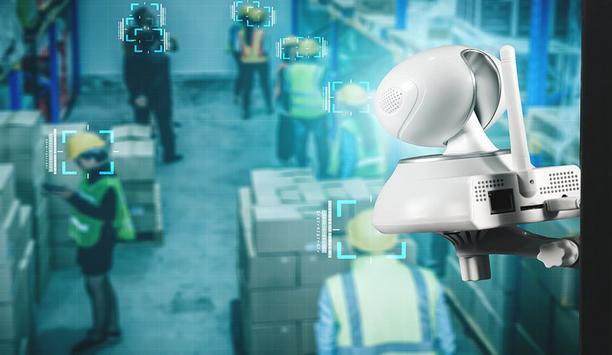
Combining Security And Networking Technologies For A Unified Solution
Download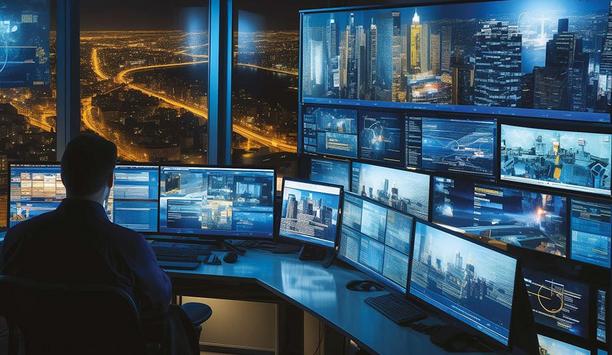
The Power Of Integration In Physical Security Systems
Download
Integrating IT & Physical Security Teams
Download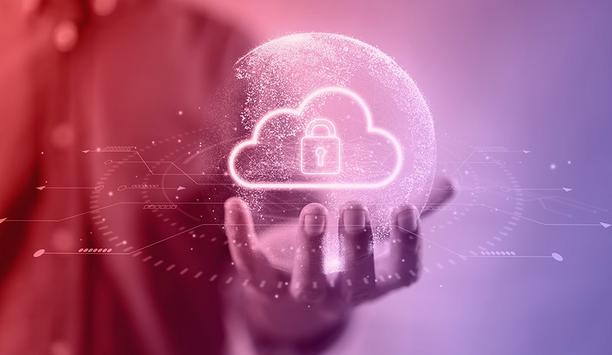
Top 7 Trends To Watch In The Physical Security Industry
Download
Boost Efficiency And Streamline Security With Integrated Access Control
Download
Video Technology Strategies For Hospitals Are Moving Beyond Security
Download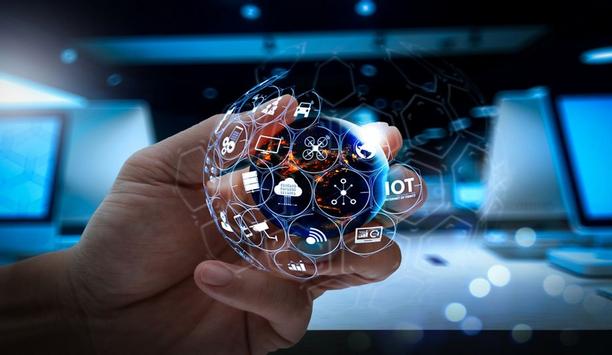
IoT Connectivity
Download
Creating A Secure And Positive Healthcare Experience
Download
Unified Physical Security
Download
Integrated Access Control: Reap The Benefits Of Connected Security
Download
Getting the Most Value From Software Subscription Agreements
Download
Combining Systems Intelligence And Human Insight For Superior Security
Download
Why Outdated Access Control Systems Are a Big Problem
Download
Preparing Your Organization With Quality Situational Awareness
Download
Three Reasons To Upgrade Your Access Control Technology
Download

